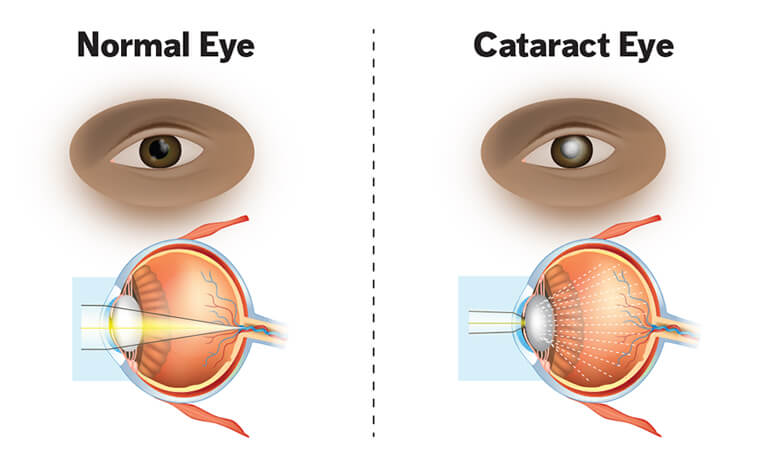
Cataract refers to the gradual opacification of the eye's natural lens, sometimes though a colour change from clear to yellow to brown, sometimes from peripheral blurring progressing to more central loss, sometimes a frustrating central loss of definition that widens peripherally. In all cases the quality of vision progressively deteriorates. Treatment is surgical, involving removal of the opacified natural lens and its replacement by an artificial one, an IOL.
Cataract should be removed when the symptoms of blur, colour desaturation and glare intolerance prevent one from leading a safe, productive visual life. For some, the Snellen chart measurement may be at the chart's top. For others, even so-called normal 6/6 vision as measured on the chart may warrant surgery. Within reason, the success and technical difficulty of surgery is not altered whether the surgery is done early or late in the cataract development.
Cataract development is principally related to age. Trauma, previous inflammation, previous eye surgery, family history and, in some cases, a lifetime's exposure to UV light also predispose to cataract.

Cataract surgery is one of the most common and most successful operations today. IOL implantation allows the surgeon to customise the post-op vision. Short and long sighted people frequently achieve good distance vision without glasses. Reading glasses are normally required as the fixed strength IOL cannot focus both distance and near vision, just as the natural lens loses this ability in the mid 40s. Successful cataract surgery has become more than removal of a visual obstruction. It can permanently change the clarity and need for distance glasses, thus one's quality of life.
Complications of cataract surgery do occur and may be severe. The decision to operate is not taken lightly despite the typical success of the procedure. Surgery usually involves a day-stay procedure under local anaesthetic with implantation of a selected IOL and closure of the wound without sutures. Posterior capsule opacification.

The cataract occurs as a result of the natural aging process of lens fibres which become opaque over a period of time.
This occurs as a result of excess intake of oral steroid or putting steroid drops in the eye.
Here, cataract develops as a result of some other primary ocular disease such as chronic eye inflammation or glaucoma.
Contact Ratnam Eye Hospital today for all your Cataract needs in Ahmedabad City at Call us 79266 42347.